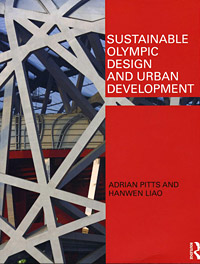Aesthetic and sustainable
Thu, 07 Jun 2012 14:06:00 BST
New Head of Architecture and 3D Design, Professor Adrian Pitts, seeks both

MODERN buildings must be aesthetically pleasing. But they must perform well too and achieve high standards of environmental sustainability.
The University of Huddersfield’s new Head of Architecture and 3D Design, Professor Adrian Pitts (pictured), is well equipped to deliver this message. He has a research and teaching background in the science of buildings – including energy efficiency – and his industrial experience, included working on air-condition systems for a major factory and the thermodynamics of power stations.
Professor Pitts argues that this is a challenging period for all aspects of building design and construction.
“The whole industry, from the profession of architecture to the people who construct buildings, is going through a degree of upheaval, partly because there have been changes in construction market activity, but also because there are changing pressures. People are more interested in the quality of buildings they get and concerned about the energy which those buildings use,” he says.
But Professor Pitts is confident that his new University of Huddersfield department is well equipped to address the challenges.
“The key thing is to combine design quality with sustainability,” he says.

Born in Hull, Professor Pitts’s academic career – after PhD research conducted with ICI Fibres in Doncaster and a period working for Ferranti in Manchester – has been spent at the universities of Sheffield and Sheffield Hallam, where he became Professor of Sustainable Architecture.
At Hallam he headed research in a thoroughly multi-disciplinary department and has encountered the same philosophy at Huddersfield. For example, his new department incorporates not just architecture but also important subject areas within 3-D design. The Product Design team are involved with the INDEX Design to Improve Life organisation, which has resulted in the staging a major international exhibition in and around he campus in September.
Students of architecture still tend to be drawn to the discipline for aesthetic reasons, he says.
“But I think that they are also much more aware nowadays of sustainability issues and therefore we promote them very heavily,” he adds.
“It is an aspect that cannot be ignored,” he argues, “buildings are responsible for 50 per cent of energy use, an estimated 50 per cent of waste and 40 per cent of water consumption.
“They have a major environmental impact but this is something that we can improve. Without necessarily having to invest incredibly large sums of money, we can make buildings intrinsically better.”
Professor Pitts is delighted by the architecture of his new campus.
“It is an interesting blend of the old and the new. It has buildings of architectural merit from many periods and it is pleasing that University of Huddersfield’s policy remains focussed on developing the quality of the campus.”







